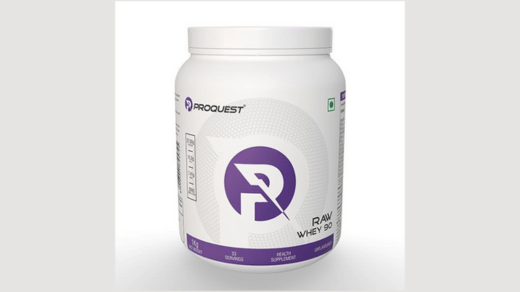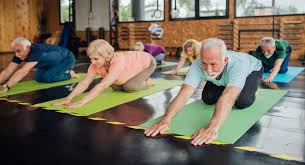Muscle pain is a common issue that affects people of all ages and lifestyles. Whether due to an intense workout, poor posture, or simply the wear and tear of daily life, finding effective relief is crucial. One approach that has gained popularity is yoga, known for its gentle stretching and mindfulness practices. But can yoga really help relieve muscle pain? In this article, we’ll explore the benefits of yoga for muscle pain, the science behind it, and additional methods to enhance your recovery, including the role of medications like Zhewitra 40 mg and Zhewitra Oral Jelly.
Understanding Muscle Pain
Muscle pain can manifest in various ways, including soreness, stiffness, and cramping. Acute muscle pain may result from overexertion or injury, while chronic muscle pain can stem from conditions like fibromyalgia or tension from stress. Identifying the root cause is vital for effective treatment. However, many individuals seek out natural remedies to manage their discomfort, with yoga being one of the most popular options.
The Benefits of Yoga for Muscle Pain Relief
1. Enhanced Flexibility
One of the primary benefits of yoga is its ability to improve flexibility. Many yoga poses gently stretch the muscles, which can alleviate tightness and reduce discomfort. Increased flexibility also helps prevent future injuries by ensuring that muscles and joints have a greater range of motion.
2. Improved Blood Circulation
Yoga promotes better blood flow throughout the body. Enhanced circulation helps deliver oxygen and nutrients to the muscles, which can speed up the healing process after injury or strain. This is particularly beneficial for those dealing with chronic pain conditions, as improved circulation can alleviate symptoms over time.
3. Stress Reduction
Chronic muscle pain often has a psychological component, where stress and anxiety exacerbate the perception of pain. Yoga incorporates breathing exercises and meditation, promoting relaxation and reducing stress levels. This holistic approach can lead to a decrease in muscle tension and pain.
4. Strengthening Muscles
While yoga is known for its stretching, it also helps to strengthen muscles. Many poses engage multiple muscle groups, which can improve overall muscle tone and endurance. Stronger muscles are less prone to injury and can better support the body, reducing the likelihood of pain.
5. Mindfulness and Body Awareness
Yoga encourages practitioners to develop a deeper awareness of their bodies. This heightened sense of awareness allows individuals to recognize when they are overexerting themselves or holding tension in specific areas. By learning to listen to their bodies, individuals can make more informed choices about their physical activity, reducing the risk of injury.
Scientific Evidence Supporting Yoga for Muscle Pain Relief
Research supports the effectiveness of yoga in alleviating muscle pain. A study published in the Journal of Pain found that participants who engaged in regular yoga practices reported a significant reduction in pain and an improvement in overall well-being compared to those who did not practice yoga. Another study in The Clinical Journal of Pain indicated that yoga could be particularly effective for individuals suffering from chronic lower back pain.
These findings suggest that incorporating yoga into your routine can be a valuable strategy for managing muscle pain, particularly when combined with other treatments.
Incorporating Medication for Pain Management
While yoga is a powerful tool for muscle pain relief, it may not be sufficient for everyone, especially in cases of severe pain or underlying medical conditions. In such instances, medication may be necessary. For instance, medications like Zhewitra 40 mg and Zhewitra Oral Jelly can provide effective relief for certain types of discomfort. Always consult a healthcare provider before starting any medication to ensure it aligns with your individual health needs and circumstances.
Tips for Practicing Yoga Safely
To maximize the benefits of yoga for muscle pain relief, consider the following tips:
1. Start Slow
If you’re new to yoga or returning after a break, start with gentle classes or beginner routines. Listen to your body and avoid pushing yourself too hard.
2. Focus on Breath
Breathing is a crucial component of yoga. Pay attention to your breath and use it to guide your movements. This mindfulness can enhance your practice and help you manage pain.
3. Modify Poses
If a particular pose causes discomfort, don’t hesitate to modify it or skip it altogether. Many poses have variations that can accommodate different levels of flexibility and strength.
4. Stay Consistent
Like any form of exercise, consistency is key. Aim to practice yoga regularly to experience its full benefits over time.
5. Consider Professional Guidance
If you’re unsure where to start, consider taking a class with a certified yoga instructor. They can provide personalized guidance and ensure you’re practicing safely.
Other Complementary Approaches
In addition to yoga, several other approaches can help manage muscle pain:
1. Physical Therapy
Working with a physical therapist can provide tailored exercises and strategies to alleviate pain and improve mobility.
2. Massage Therapy
Massage can reduce muscle tension and promote relaxation, providing relief from pain.
3. Heat and Cold Therapy
Applying heat can soothe stiff muscles, while cold therapy can reduce inflammation and numb acute pain.
4. Adequate Hydration and Nutrition
Staying hydrated and maintaining a balanced diet rich in anti-inflammatory foods can support muscle recovery and overall health.
Conclusion
Yoga offers a multifaceted approach to relieving muscle pain through its emphasis on flexibility, strength, and mindfulness. While it can be an effective standalone treatment, incorporating other methods and consulting with healthcare professionals can enhance your pain management strategy. Whether you are new to yoga or an experienced practitioner, integrating these practices into your routine can lead to significant improvements in muscle pain and overall well-being. Always remember to listen to your body and seek professional advice when necessary.




